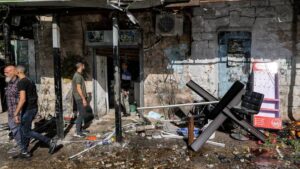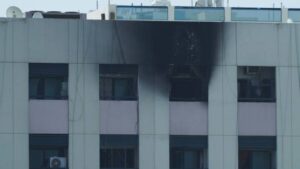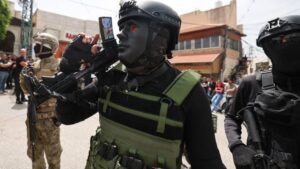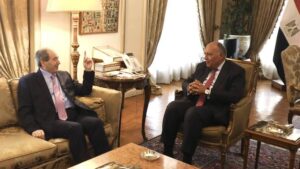The International Atomic Energy Agency (IAEA) has reported that approximately 2.5 tonnes of uranium have gone missing from a site in Libya.
The IAEA inspectors discovered that ten drums filled with uranium ore had disappeared during their visit to the undisclosed site earlier this week, raising concerns about potential radiological risks and nuclear security threats.
Anas El Gomati, the founder and Director General of the Tripoli-based Sadeq Institute, tells TRT World that the uranium has most likely been stolen from northeast Sabha, a city about 640 kilometres away from Tripoli.
“The possibility of nuclear materials falling into the hands of non-state actors or terrorist groups pose a significant security threat, not only to Libya but also to its neighbouring countries and the international community,” says Gomati.
Gomati adds, “the missing uranium could potentially be used to create a dirty bomb or be sold on the black market to other parties interested in developing nuclear weapons.”
According to Gomati, two warehouses in the region containing uranium are under the control of Libyan warlord Khalifa Haftar.
Therefore, Gomati suggests, Haftar’s militias could be behind the disappearance of the uranium, as they had access to the warehouses.
Gomati also points out that the site is under the “zone of influence” of the Russian Wagner Group, and suggests that the mercenaries may also have been involved in stealing the uranium.
The IAEA has stated that further investigation will be conducted to ascertain the whereabouts of the nuclear material and clarify the circumstances surrounding its removal.
It is uncertain when the uranium went missing, but inspectors were previously unable to visit the location due to ongoing conflicts in the region.
The IAEA has also revealed that the site was not in government-controlled territory
READ MORE: IAEA says tonnes of uranium missing from Libya site beyond govt control
Over the course of the Libyan conflict, the United Nations and other human rights organisations have issued several warnings about Libya fast turning into an “experimental field” of arms.
Libya ranks 110 out of 154 on Nuclear Threat Initiative’s Nuclear Security Index.
Former Libyan ruler Muammar Gaddafi renounced all Weapons of Mass Destruction (WMD) programs in 2003. Despite the verified dismantlement of WMD stockpiles and exploration of peaceful nuclear energy, ongoing civil war has added new hurdles to the international community’s efforts to make Libya a threat-free zone when it comes to the issue of nuclear proliferation.
In the 1970s, Gaddafi proclaimed his country’s determination to acquire nuclear weapons since he considered Israel’s acquisition of nuclear technology a threat to Libya.
Gaddafi however changed his course in 1980 by signing an agreement with the International Atomic Energy Agency (IAEA) and agreeing to put all of Libya’s nuclear facilities under international inspection. This eventually paved the way for Libya to end proliferation and renounce WMD stockpiles.
Despite the dismantling of WMD stockpiles, Libya still had raw materials, including uranium, which were stored in secret warehouses. As the civil war continued, these uranium sites came under the control of what Gomati described as non-state actors.
























![Deputy Minister of Saudi Foreign Ministry, Waleed El Khereiji [R], meets with Syrian Minister of Foreign Affairs Faisal Mekdad in Jeddah, Saudi Arabia, on April 12, 2023.](https://www.infonewsall.com/storage/0m_153832_sau20230412saudiarabiasyria_1681335069352-300x169.jpg)

























Be First to Comment